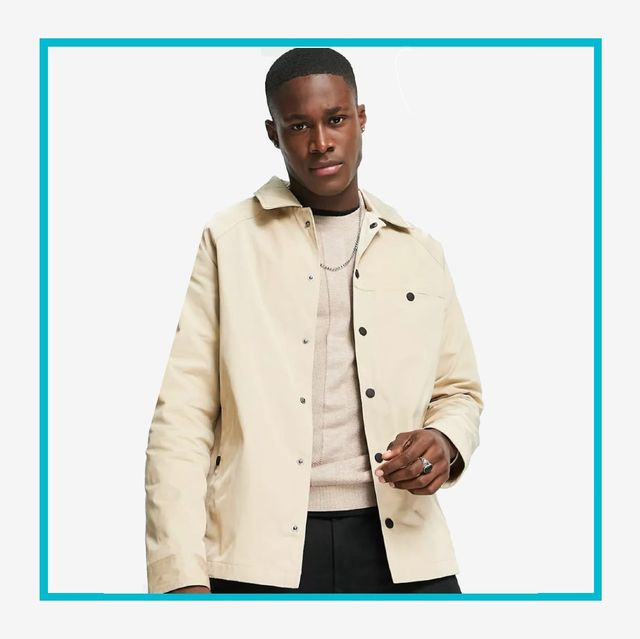How Fabric Choices in Branded Clothing Affect Comfort and Style
Wiki Article
Comprehending Clothing: The Value of Material Selections in Your Wardrobe
The selection of fabric in clothing plays a critical function in both aesthetic appeals and performance. Various materials provide varying levels of breathability, resilience, and comfort, straight influencing the wearer's experience. Understanding these subtleties can improve one's closet significantly. Several forget just how these selections can influence not simply individual style, but additionally sustainability. What fabric decisions could redefine your closet and align it with both design and responsibility?The Function of Textile in vogue and Performance

Common Textile Kinds and Their Features
When choosing clothes, recognizing the features of typical textile types is vital for making educated choices. Cotton, a widely-used natural fiber, is recognized for its breathability, soft qualities, and flexibility, making it ideal for informal wear and day-to-day garments. Bed linen, another natural choice, flaunts exceptional moisture-wicking residential or commercial properties and a distinct structure, suitable for cozy climates.Wool, frequently favored for its heat and sturdiness, varies in fineness; merino wool is soft versus the skin, while coarser types are utilized for outerwear. Synthetic materials like polyester and nylon provide toughness and resistance to wrinkles, making them preferred for activewear and traveling garments. Blends, which combine synthetic and all-natural fibers, can boost functionality while maintaining comfort. By recognizing these fabric features, individuals can choose clothes that lines up with their way of living and visual preferences.Breathability and Comfort: Choosing the Right Fabrics for Different Environments
Picking the ideal fabrics for numerous environments can considerably boost comfort and total wearability. Breathable products are vital in warm climates, as they permit air blood circulation and moisture dissipation. Fabrics such as cotton, bed linen, and moisture-wicking synthetics efficiently draw sweat far from the body, keeping the wearer cool and completely dry. Alternatively, in chillier environments, thicker materials like woollen or fleece offer insulation while preserving breathability, making certain warmth without overheating.Additionally, the option of fabric weight plays an essential function; light-weight textiles are better for summer, whereas larger alternatives are matched for winter months wear. Recognizing the distinct buildings of each fabric allows people to dress suitably for varying climate condition. Eventually, picking breathable and comfortable fabrics customized to particular environments can substantially enhance day-to-day convenience and improve the total experience of wearing clothing.Toughness and Treatment: Exactly How Fabric Impacts Longevity of Your Wardrobe
Picking the best materials can considerably influence the toughness and treatment needs of a closet. Fabrics such as cotton and polyester are known for their resilience and simplicity of upkeep, making them ideal for daily wear. In comparison, delicate materials like silk and lace require even more cautious handling and specialized cleansing techniques, which can raise the time and effort needed for care. Branded Clothing.Durability is additionally affected by the textile's weave and finish; tightly woven fabrics tend to withstand wear and tear better than freely woven alternatives. Additionally, synthetic blends typically offer improved longevity, incorporating the most effective qualities of numerous fibers.Understanding the care guidelines for each textile is important, as improper drying or cleaning can cause premature wear. Inevitably, picking long lasting materials can result in a longer-lasting wardrobe, lowering the regularity of substitutes and contributing to an extra sustainable style choiceThe Influence of Material on Fit and Shape

Lasting Fabric Selections: Making Eco-Friendly Choices
The effect of textile expands past fit and shape to incorporate environmental aspects, triggering a growing interest in sustainable fabric selections. Eco-friendly textiles, such as natural cotton, hemp, and Tencel, are obtaining grip among consumers who focus on sustainability in their wardrobes. These products are frequently produced with less chemicals and water, minimizing their environmental footprint.Additionally, recycled fabrics, made from post-consumer waste, supply an ingenious service to the fabric industry's pollution problem. Brands significantly welcome transparency in their directory sourcing methods, allowing customers to make educated decisions concerning their purchases.Choosing lasting fabrics not just supports honest practices but also motivates the fashion industry to adopt even more responsible manufacturing approaches. As recognition of ecological issues rises, people are advised to assess the lasting effect of their textile choices, cultivating an activity in the direction of a more sustainable and eco mindful method to style.
Elevating Design: Exactly How Material Can Transform a Clothing
While many might focus on shade and cut when selecting a clothing, the selection of textile plays an important duty in raising style and enhancing site web general look. Different products communicate unique moods and messages; as an example, silk radiates high-end and refinement, while denim provides a laid-back, loosened up vibe. The structure and drape of a textile can drastically modify the silhouette, with organized textiles giving a polished appearance and softer ones creating a much more fluid, loosened up aesthetic.Moreover, the weight of the textile affects wearability throughout seasons. Lightweight textiles like linen and cotton are excellent for summertime, while much heavier materials such as wool and velour give warmth and beauty in cooler months. Comprehending material properties, such as breathability and stretch, likewise equips people to make enlightened choices that improve convenience without compromising design. Inevitably, the ideal material can transform an outfit from common to extraordinary, making it an essential consideration in any kind of closet.Often Asked Concerns
Exactly how Do I Determine the Material Material of My Garments?
Continued To determine textile content, one can examine care tags, conduct shed examinations for fiber identification, or seek advice from fabric swatches. These approaches aid distinguish materials, ensuring educated selections for garments treatment and maintenance in day-to-day wear.Can Material Selection Affect My State Of Mind or Self-confidence?
Fabric choice can significantly influence an individual's state of mind and self-confidence. Branded Clothing. Particular materials may evoke feelings of convenience or style, while others can really feel restrictive or uncomplimentary, inevitably influencing self-perception and psychological health throughout the dayWhat Fabrics Are Finest for Sensitive Skin?
For people with delicate skin, natural fabrics like bed linen, cotton, and bamboo are typically suggested. These products are breathable, hypoallergenic, and less most likely to create irritation, making them ideal choices for comfort and skin health.Exactly how Do I Appropriately Wash and Take Care Of Different Fabrics?
To correctly care and wash for various materials, one need to take into consideration each product's certain requirements, consisting of temperature level setups, detergents, and drying methods, making sure long life and preserving the textile's original high qualities for perfect usage.Are There Particular Fabrics for Athletic or Performance Put On?
Sports or efficiency wear commonly utilizes fabrics such as polyester, nylon, and spandex. These products are created for moisture-wicking, breathability, and adaptability, boosting movement and comfort during exercises while supplying sturdiness and assistance. Alternatively, in cooler environments, thicker fabrics like wool or fleece offer insulation while maintaining breathability, making certain warmth without overheating.Additionally, the choice of textile weight plays a crucial role; light-weight textiles are better for summer season, whereas larger alternatives are fit for winter season wear. In contrast, fragile products like silk and lace require more careful handling and specialized cleansing methods, which can raise the time and initiative needed for care.Durability is also influenced by the fabric's weave and finish; tightly woven fabrics tend to withstand wear and tear better than loosely woven options. In contrast, inflexible materials can limit motion however offer a timeless, refined look.Moreover, the thickness and texture of the material can affect the visual perception of body shape. The influence of textile prolongs beyond fit and shape to include environmental variables, prompting an expanding interest in lasting material choices. The texture and drape of a fabric can significantly alter the shape, with organized textiles providing a refined look and softer ones producing an extra fluid, kicked back aesthetic.Moreover, the weight of the material influences wearability throughout periods.Report this wiki page